
The Royal Australian Air Force (RAAF), formed in March 1921, is the aerial warfare branch of the Australian Defence Force (ADF). It operates the majority of the ADF's fixed wing aircraft, although both the Australian Army and Royal Australian Navy also operate aircraft in various roles. It directly continues the traditions of the Australian Flying Corps (AFC), formed on 22 October 1912. The RAAF provides support across a spectrum of operations such as air superiority, precision strikes, intelligence, surveillance and reconnaissance, air mobility, space surveillance, and humanitarian support.

The British Commonwealth Air Training Plan (BCATP), or Empire Air Training Scheme (EATS) often referred to as simply "The Plan", was a massive, joint military aircrew training program created by the United Kingdom, Canada, Australia and New Zealand, during the Second World War. BCATP remains as one of the single largest aviation training programs in history and was responsible for training nearly half the pilots, navigators, bomb aimers, air gunners, wireless operators and flight engineers who served with the Royal Air Force (RAF), Royal Navy Fleet Air Arm (FAA), Royal Australian Air Force (RAAF), Royal Canadian Air Force (RCAF) and Royal New Zealand Air Force (RNZAF) during the war.
The Royal Air Force (RAF) and Fleet Air Arm had included personnel from outside the United Kingdom from before the beginning of the Second World War, and many served in the Battle of Britain of 1940. Many of these volunteers were British subjects—thus, citizens—coming from territories that made up part of the British Empire. Additionally, a significant part was made up of refugees and exiles from German-occupied Europe and American emigrants.
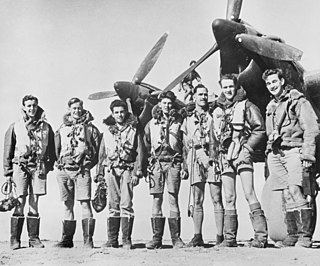
Article XV squadrons were Australian, Canadian, and New Zealand air force squadrons formed from graduates of the British Commonwealth Air Training Plan (1939) during World War II.
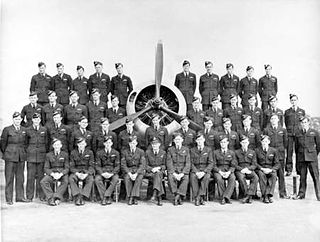
No. 5 Service Flying Training School was a Royal Australian Air Force (RAAF) flight training unit that operated during World War II. It was one of eight Service Flying Training Schools established by the RAAF to provide intermediate and advanced flying instruction to new pilots as part of Australia's contribution to the Empire Air Training Scheme. No. 5 SFTS was formed at RAAF Station Uranquinty, New South Wales, in October 1941, and disbanded in February 1946. Its staff and equipment were employed to re-establish No. 1 Flying Training School, which transferred to RAAF Station Point Cook, Victoria, the following year. Care and Maintenance Unit Uranquinty was also formed from No. 5 SFTS's facilities, to look after surplus aircraft at the base prior to their disposal, and disbanded in December 1948.

No. 4 Elementary Flying Training School was a Royal Australian Air Force (RAAF) pilot training unit that operated during World War II. It was one of twelve elementary flying training schools employed by the RAAF to provide introductory flight instruction to new pilots as part of Australia's contribution to the Empire Air Training Scheme. No. 4 EFTS was established in January 1940 at Mascot, New South Wales, and initially operated in conjunction with civilian flying organisations based at Mascot and Newcastle. The school was disbanded in April 1942, and its operations transferred to No. 6 Elementary Flying School at Tamworth.

No. 1 Flying Training School was a school of the Royal Australian Air Force (RAAF). It was one of the Air Force's original units, dating back to the service's formation in 1921, when it was established at RAAF Point Cook, Victoria. By the early 1930s, the school comprised training, fighter, and seaplane components. It was re-formed several times in the ensuing years, initially as No. 1 Service Flying Training School in 1940, under the wartime Empire Air Training Scheme. After graduating nearly 3,000 pilots, No. 1 SFTS was disbanded in late 1944, when there was no further requirement to train Australian aircrew for service in Europe.

No. 7 Service Flying Training School was a flying training school of the Royal Australian Air Force (RAAF) during World War II. It was formed in June 1941, and commenced flying the following month. Responsible for intermediate and advanced instruction of pilots under the Empire Air Training Scheme (EATS), the school was based at RAAF Station Deniliquin, New South Wales, and operated CAC Wirraway single-engined trainers. The Wirraways were classed as reserve aircraft for Australia's defence in response to the outbreak of the Pacific War in December 1941. Having graduated over 2,000 pilots, the school was renamed the Advanced Flying and Refresher Unit (AFRU) in December 1944. AFRU was disbanded in May 1946.
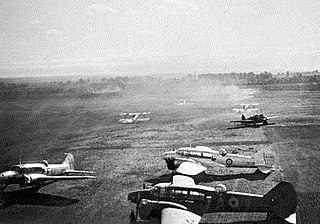
No. 2 Service Flying Training School was a flying training school of the Royal Australian Air Force (RAAF) that operated during World War II. It was formed in July 1940, under the command of Wing Commander Frederick Scherger. Responsible for intermediate and advanced instruction of pilots under the Empire Air Training Scheme (EATS), the school was based at RAAF Station Forest Hill near Wagga Wagga, New South Wales, and operated CAC Wirraway and Avro Anson aircraft. The Ansons were phased out in July 1941, and the school became an all-Wirraway unit. In 1942 the RAAF divided the personnel and equipment of No. 2 SFTS between Nos. 5 and 7 Service Flying Training Schools at Uranquinty and Deniliquin, respectively. No. 2 SFTS was disbanded that April, and the base facilities taken over by No. 5 Aircraft Depot.

The Australian contribution to the Battle of Normandy involved more than 3,000 military personnel serving under British command. The majority of these personnel were members of the Royal Australian Air Force (RAAF), though smaller numbers of Australians serving with the Royal Navy and British Army also participated in the fighting prior to and after the Allied landings on 6 June 1944. While all the RAAF units based in the United Kingdom (UK) took part in the battle, Australians made up only a small portion of the Allied force.

No. 4 Service Flying Training School was a flying training school of the Royal Australian Air Force (RAAF) during World War II. It was formed in February 1941, and commenced flying the following month. Responsible for intermediate and advanced instruction of pilots under the Empire Air Training Scheme (EATS), the school was based at Geraldton, Western Australia, and operated Avro Anson aircraft. Two reserve squadrons were formed in response to the outbreak of war in the Pacific, though they never saw action. Flying activity was reduced towards the end of 1943, and the school was disbanded in May 1945, having graduated over 1,000 pilots. It re-formed as No. 87 Operational Base Unit, which was renamed Care and Maintenance Unit (CMU) Geraldton in May 1946. CMU Geraldton was disbanded in September 1947.
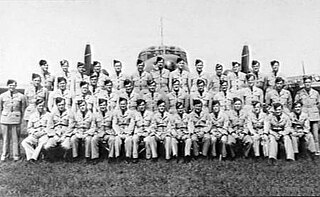
No. 3 Service Flying Training School was a flying training school of the Royal Australian Air Force (RAAF) during World War II. It was formed in September 1940, and commenced flying two months later. Responsible for intermediate and advanced instruction of pilots under the Empire Air Training Scheme (EATS), the school was based at RAAF Station Amberley, Queensland, and operated CAC Wirraway and Avro Anson aircraft. Two reserve squadrons were formed at the school in response to the outbreak of war in the Pacific, and the base fortified against air attack. In March 1942 the RAAF divided the staff and equipment of No. 3 SFTS between Nos. 1 and 6 Service Flying Training Schools at Point Cook, Victoria, and Mallala, South Australia, respectively. No. 3 SFTS was disbanded the following month.
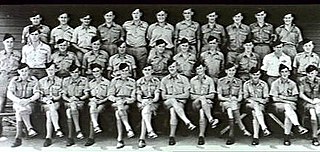
No. 6 Service Flying Training School was a flying training school of the Royal Australian Air Force (RAAF) during World War II. It was formed in August 1941, and commenced flying the following month. Responsible for intermediate and advanced instruction of pilots under the Empire Air Training Scheme (EATS), the school was based at RAAF Station Mallala, South Australia, and operated Avro Anson and Airspeed Oxford aircraft. The school formed a reserve squadron for Australia's defence after the outbreak of war in the Pacific in December 1941. Having graduated over 2,000 pilots, No. 6 SFTS completed its final training course in September 1945, and was re-formed as Care and Maintenance Unit Mallala in January 1946.

No. 1 Elementary Flying Training School was a Royal Australian Air Force (RAAF) pilot training unit that operated during World War II. It was one of twelve elementary flying training schools employed by the RAAF to provide introductory flight instruction to new pilots as part of Australia's contribution to the Empire Air Training Scheme. The unit was established in November 1939 as No. 2 Flying Training School at Melbourne, Victoria. It was relocated to Parafield, South Australia, in December 1939 and renamed No. 1 EFTS the following month. Training activities relocated to Tamworth, New South Wales, in May 1944; the school was disbanded in December that year.

No. 8 Service Flying Training School was a flying training school of the Royal Australian Air Force (RAAF) that operated during World War II. It was formed in December 1941, and graduated its first course in March 1942. Responsible for intermediate and advanced instruction of pilots under the Empire Air Training Scheme (EATS), the school was based at RAAF Station Bundaberg, Queensland, and operated Avro Anson aircraft. It spawned two maritime patrol squadrons in early 1943, raised in response to increased Japanese submarine activity off Australia's east coast. Some of the school's aircraft were also attached to the Australian Army in 1944–45. No. 8 SFTS completed its final training course in December 1944, and was disbanded in July 1945.

No. 3 Elementary Flying Training School was a Royal Australian Air Force (RAAF) pilot training unit that operated during World War II. It was one of twelve elementary flying training schools employed by the RAAF to provide introductory flight instruction to new pilots as part of Australia's contribution to the Empire Air Training Scheme. No. 3 EFTS was established in January 1940 at Essendon, Victoria, and initially included a significant proportion of civilian staff and private aircraft; by mid-year these had been largely integrated into the military. The school was disbanded in May 1942, its aircraft and instructional staff having been transferred to No. 11 Elementary Flying School at Benalla.

No. 11 Elementary Flying Training School was a Royal Australian Air Force (RAAF) pilot training unit that operated during World War II. It was one of twelve elementary flying training schools employed by the RAAF to provide introductory flight instruction to new pilots as part of Australia's contribution to the Empire Air Training Scheme. No. 11 EFTS was established in June 1941 at Benalla, Victoria, and operated Tiger Moths and Wackett Trainers during the war. It ceased training in July 1945 after almost 3,000 students had passed through, and was re-formed as Care and Maintenance Unit (CMU) Benalla in February 1946. CMU Benalla was disbanded in October 1948.

No. 8 Elementary Flying Training School was a Royal Australian Air Force (RAAF) pilot training unit that operated during World War II. It was one of twelve elementary flying training schools employed by the RAAF to provide introductory flight instruction to new pilots as part of Australia's contribution to the Empire Air Training Scheme. No. 8 EFTS was established in September 1940 at Narrandera, New South Wales. Training ceased in December 1944 and the school was reduced to maintaining base infrastructure and aircraft. It was officially disbanded in June 1945 and renamed Care and Maintenance Unit (CMU) Narrandera. The CMU was disbanded in December 1947.


















